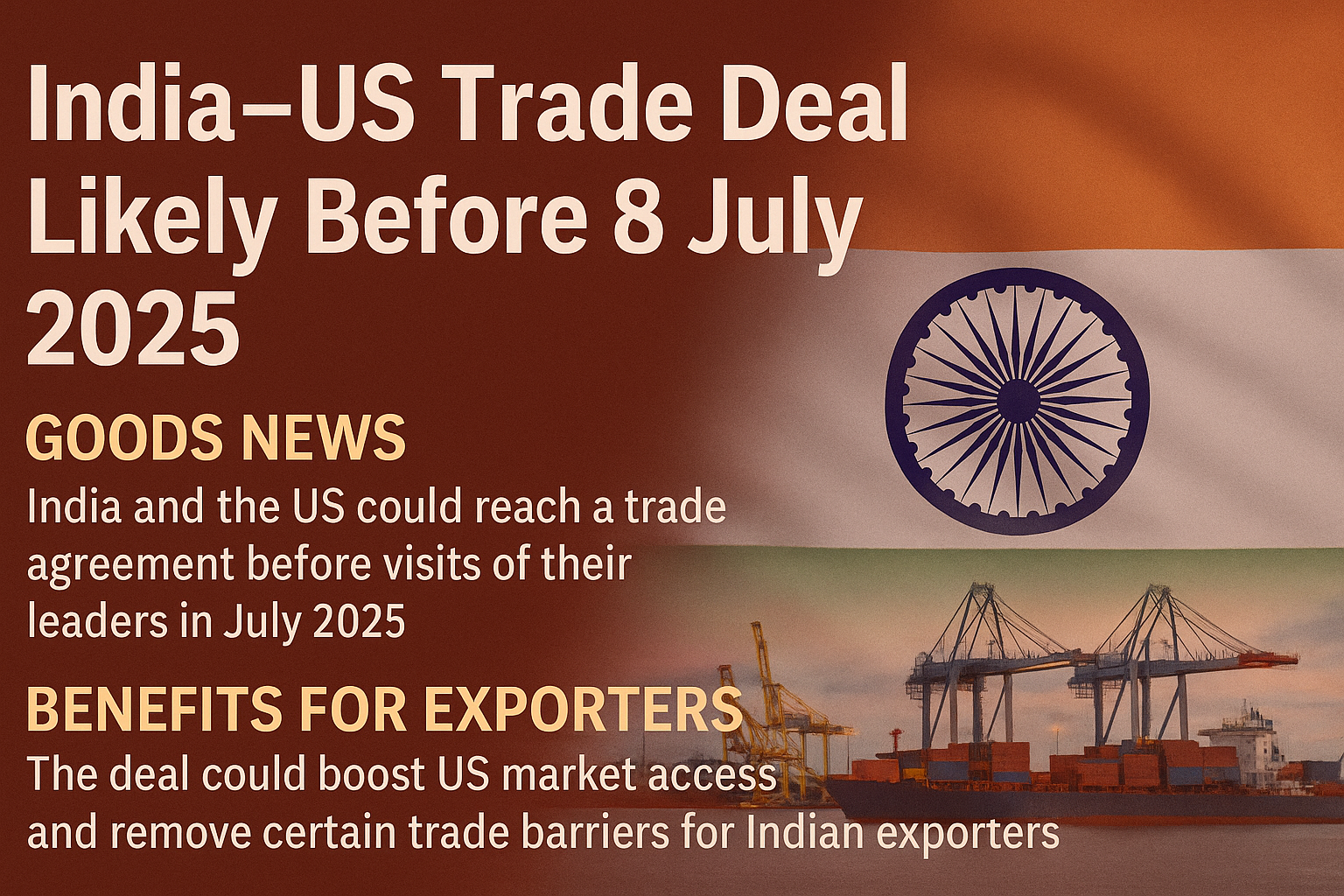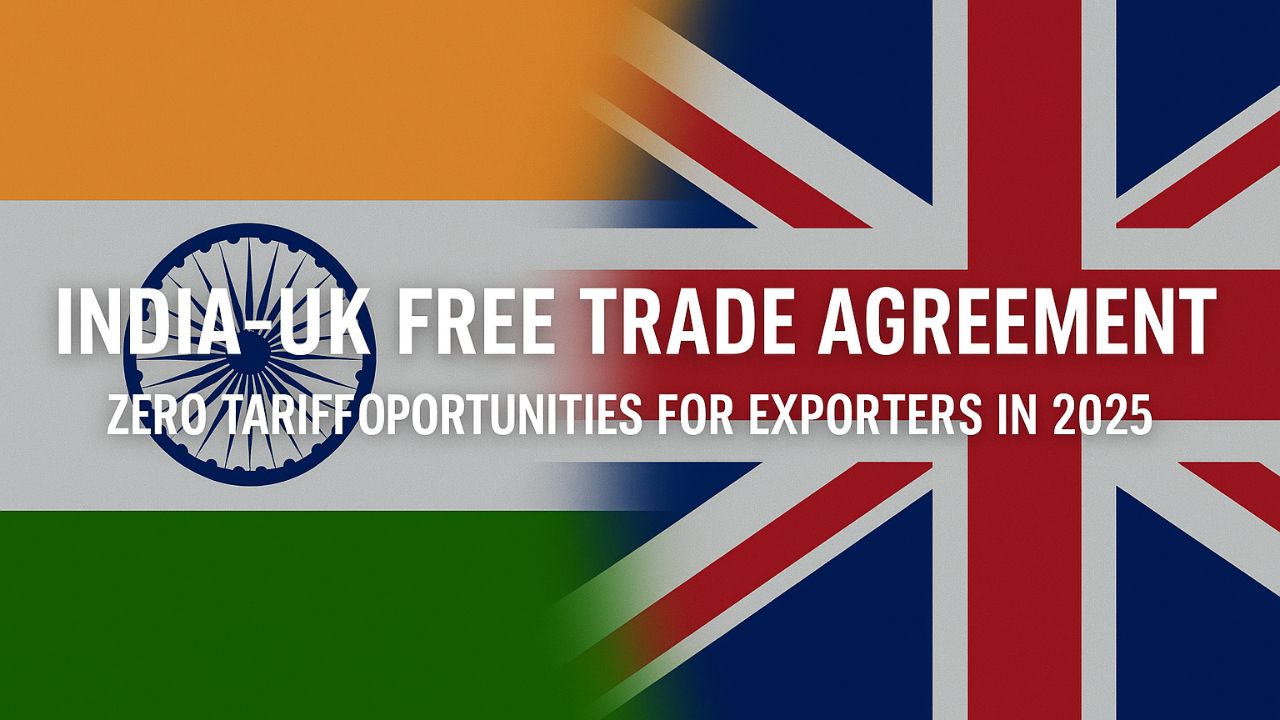India–US Trade Deal Likely by July 8: Key Highlights and Export Insights
India and the United States are on the brink of finalizing a landmark bilateral trade agreement by July 8, 2025. This breakthrough comes as the clock ticks on a critical 90-day pause in the US’s retaliatory tariff framework—originally implemented under Section 301 of the US Trade Act—which temporarily shields Indian exports from heightened duties.
A high-level Indian delegation, led by Commerce and Industry Minister Piyush Goyal and India’s chief negotiator Rajesh Agrawal, is headed to Washington for a final round of negotiations. Talks have reached an advanced stage, with both sides reportedly “upbeat and confident” about reaching a comprehensive trade agreement that benefits mutual interests.
Why Is This Trade Deal Crucial?
For Indian exporters, the timing couldn’t be more important. The urgency stems from the expiry of a US-imposed tariff suspension on April 2, extended for 90 days. If a trade deal is not signed by the July 8 deadline, Indian goods could once again face punitive duties, especially on sectors like steel, aluminum, textiles, and auto parts.
In a statement, Indian officials clarified that the country has no intention of offering unilateral zero-tariff concessions. Instead, it seeks a balanced agreement that protects India’s trade interests and opens new avenues in the US market.
Trade Deficit and Economic Context
According to new data from the Ministry of Commerce, India’s merchandise trade deficit widened significantly in April 2025, hitting a five-month high of $26.42 billion due to a surge in imports. This further intensifies the need for a favorable trade framework with the US, India’s largest export destination after the UAE.
Key export categories to the US include:
- Pharmaceuticals
- Organic chemicals
- Garments and textiles
- Gems and jewelry
- Engineering goods
- Information technology services
A reduction or resolution in tariff disputes will give these sectors a competitive edge and price stability.

WTO Involvement and Global Trade Alignment
India’s submission to the World Trade Organization (WTO) was also highlighted during the talks. Contrary to speculation, this was not a unilateral concession but a procedural filing to safeguard India’s broader trade interests under multilateral trade norms.
Officials emphasized that India, like other nations impacted by the US’s Section 301 actions, maintains the right to retaliate against discriminatory tariffs. However, the goal remains to avoid escalation and instead chart a roadmap that allows both economies to thrive on a level playing field.
Opportunities for Indian Exporters
If signed, this trade agreement could be a game-changer for Indian exporters by:
- Preventing the imposition of US retaliatory tariffs
- Ensuring more predictable market access
- Streamlining regulatory barriers
- Opening potential new sectors under BTA (Bilateral Trade Agreement)
This is particularly encouraging for MSMEs and new exporters looking to enter the US market with less regulatory friction and better clarity on tariffs.
Strategic Takeaways for Exporters
- Monitor Policy Updates: Stay tuned for updates from the Ministry of Commerce and DGFT.
- Review Tariff Codes: Understand HS codes affected by the Section 301 framework to assess the impact on your product line.
- Engage with Export Councils: APEDA, FIEO, and EEPC India are likely to provide updated guidance once the deal is finalized.
- Prepare Documentation: If favorable tariff changes come into effect, timely documentation will be essential to claim benefits.
Conclusion
As India and the US edge closer to a historic bilateral trade agreement, exporters must remain alert and prepared to leverage new opportunities. A deal before July 8, 2025, could not only avoid fresh tariff hikes but also usher in a new era of economic collaboration. Indian exporters, especially in high-potential sectors, should see this as a pivotal moment to strengthen their global trade footprint.
Call to Action:
👉 New to Exports? Download our ₹299 Beginner’s Guide & Start Your Export Journey in 30 Days!
Download Now »



